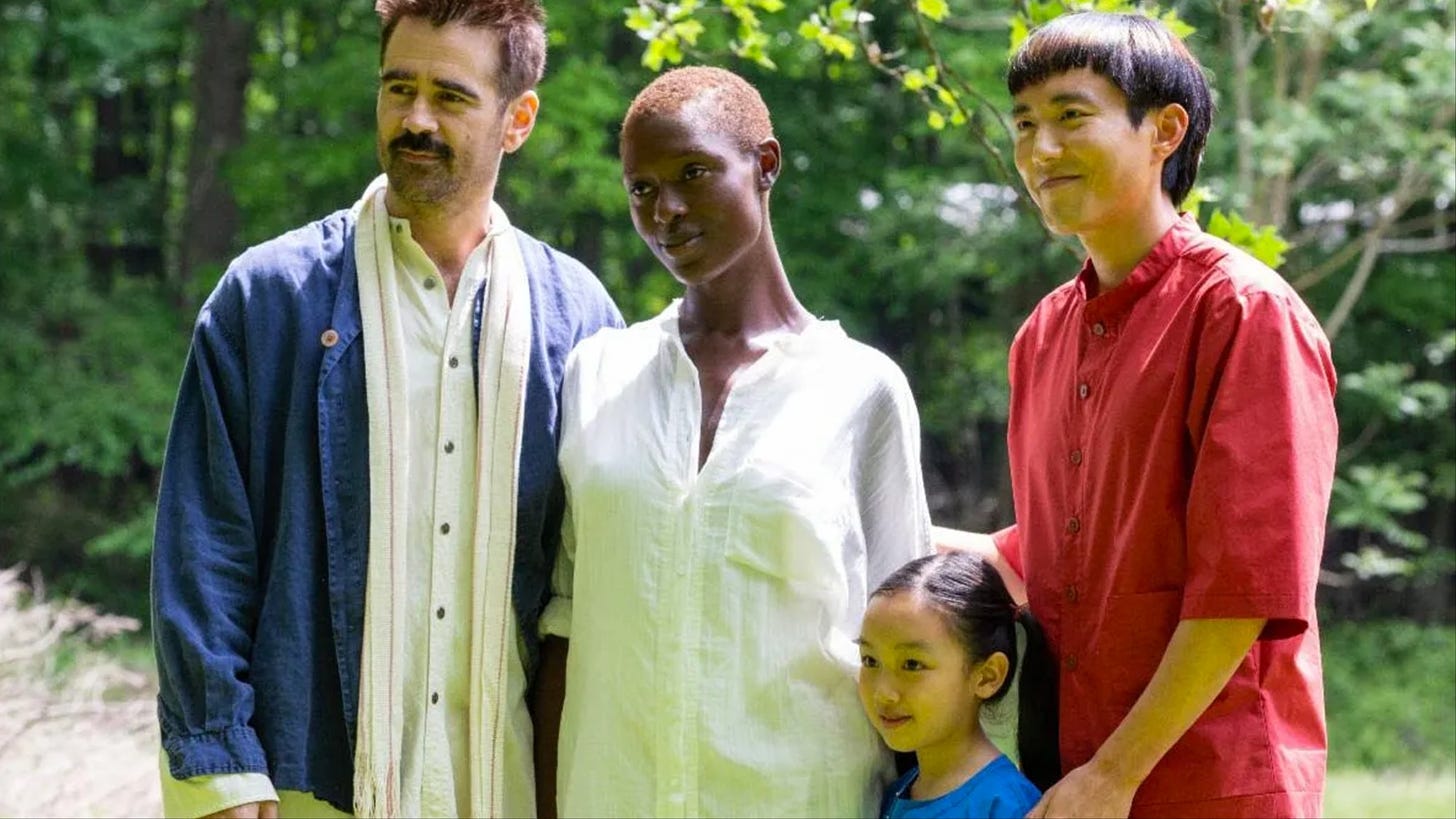After Yang
Colin Farrell anchors this intimate, cerebral sci-fi drama about a family dealing with the potential loss of their synthetic "brother."
“There’s no something without nothing.”
There’s a noble tradition of quiet, contemplative science fiction filmmaking that isn’t all about special effects and fantastical story elements. That stuff is there, but exists in the backdrop to a very human tale where people’s lives are impacted by technological advances, rather than a story beholden to lasers and aliens and all that.
I’d put “A.I.: Artificial Intelligence” in this category. “Gattaca,” too. “Ex Machina” is a more recent example. “Blade Runner” is probably the granddad of this family of ‘cerebral sci-fi.’
Add “After Yang” to the group. Korean-born writer/director director Kogonada, best known for the Indiana-based “Columbus,” gives a portrait of the near-future where synthetic beings not only walk among us, they’re cherished as part of the family — until they break, that is.
Based on the short story, "Saying Goodbye to Yang" by Alexander Weinstein, the film stars Colin Farrell as Jake, the father of Mika (Malea Emma Tjandrawidjaja), a darling girl of about 7. Because she was adopted from China, Jake and his wife, Kyra (Jodie Turner-Smith) decided to buy her a big brother designed to be culturally Chinese to connect her to her biological roots.
Physically, Yang (Justin H. Min) looks like just another member of the family, albeit a heterogeneous one with Black, white and Asian members. We’re clued in that he’s different by a scene where Yang is composing a family portrait, as Jake and Kyra beckon him to join in the photo, but he hesitates. He’d rather observe than belong.
Much of the film is shot this way, so we’re seeing things from Yang’s perspective, usually via video recordings of his memories.
As the story opens, Yang shuts down one night and won’t wake up in the morning. Jake isn’t too concerned because he’s “still under warranty,” flinging the robot over his shoulder like a sick puppy. But it soon becomes clear there’s something deeply wrong with him, and Jake and Kyra have to navigate the possibility of Yang never returning.
To Mika, who’s grown up with Yang as a sibling/caregiver, it has the same emotional impact as having a brother who’s dying. Meanwhile, Jake has to weigh humdrum considerations like financial cost and logistics. Although “techno sapiens” like Yang are machinery inside, their exteriors seem to be biologically alive — decomposition is a major concern.
Things go on. We learn things about the family, and the world they live in. It’s some decades into the future, I’d guess. Clothing, food and design all seem to have shifted in an Asian direction. People still have personal vehicles, but they’re driverless bubbles with living plants inside as a soothing aesthetic.
Jake runs a tea shop specializing in hand-brewed leaves, not the fancy newer crystals — so it’s a pretty lonely place. At one point he has a conversation with Yang where he reveals how he fell in love with tea-making after watching a documentary from the 20th century where a man goes in search of the finest tea in China. (I’m guessing this refers to “All in this Tea.”)
Kyra is the dominant breadwinner and there’s a quiet antagonism going on between them about the balance of work and parenting roles. Both agree they’ve relied too much on Yang to be Mika’s caretaker.
To save money, Jake bought Yang from a discount shop in Chinatown that refurbishes technos manufactured by “Second Siblings,” the giant Apple of this industry. His quest to save Yang brings him into encounters with various people, including his gregarious, helpful neighbor (Clifton Collins Jr.); Russ (Ritchie Coster), an underground mechanic who hacks open technos against the law; and Cleo (Sarita Choudhury), a museum curator who wants to put Yang’s body and memories on display.
Jake searches through Yang’s databank, which contains a vast array of small snippets of his memories, which he watches like home movies. So he recalls scenes he himself was in, seeing them from his “son’s” perspective.
Most surprising, he discovers repeated memories of a young woman, Ada (Haley Lu Richardson), who would appear to have struck up a friendship with Yang during his few moments untethered to family duties. Could they possibly have even been lovers?
What makes “After Yang” so interesting is that it only shows us small glimpses of this world through a handful of characters, and invites us to fill in the blanks ourselves. For example, given the state of our yin-yang culture when it comes to sexuality, one would think that many technos would be used for sex purposes. A seedier side of this “created persons” society is just hinted at.
At the center is the question people always strive to avoid when it comes to simulated people: are they our servants? Our slaves? Just tools that happen to look like us? It seems Jake and Kyra regard Yang like their car or other important technology: expensive, indispensable but replaceable.
To Mika, and possibly to Yang himself, there’s an emotional connection that grows with others that renders meaningless the question of how he came to be.
“After Yang” is the sort of film that is quiet, thoughtful, and to some eyes slow-moving. But its richness comes from the pensive spaces in between the science and the fiction.





